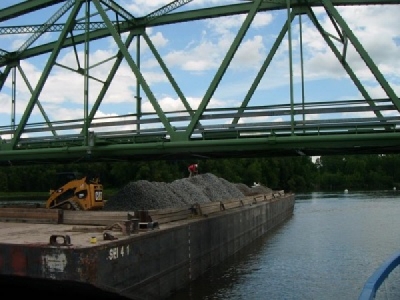
Posted on January 1, 2019
A new Department of Environmental Conservation study finds that General Electric’s cleanup of PCBs in the Hudson River remains incomplete, state officials said.
Gov. Andrew Cuomo on Thursday released a fresh evaluation of fish samples taken from the river in 2017 that finds PCBs — or polychlorinated biphenyls — in their flesh remain above acceptable levels, two years after the dredging project ended.
The river is a Superfund cleanup site due to the contamination, and General Electric has been paying for the cleanup under U.S. Environmental Protection Agency supervision. It’s the largest Superfund project ever done, and has been surrounded by controversy for decades.
The release of the state’s study is the latest salvo in what is now a long-running dispute between the state, which contends more dredging to remove PCBs is needed, the EPA and GE, which discharged the PCBs into the river.
GE says the $1.7 billion cleanup of “hot spots” between Hudson Falls and Troy between 2009 and 2015 was a success, and EPA officials have tentatively agreed, though they are now doing an evaluation on issuing a “certificate of completion” that would end the massive cleanup.
If the EPA issues the certificate of completion, New York plans to fight. “New York will take any action necessary to hold them accountable and demand they fulfill their obligation to restore our treasured river,” Cuomo said.
The state said that the EPA should also compel GE to conduct a full investigation of PCB levels in fish in the lower part of the river, below Troy. Strong calls for more action have come from environmental organizations and politicans in the lower Hudson Valley.
“The health of the Hudson River estuary and the vitality of the communities along its banks are at stake and the EPA must not let GE off the hook for a job that is not yet done,” Cuomo said in releasing the new study results. “The latest sampling data confirms the overwhelming body of evidence that PCB levels remain unacceptably high in both the riverbed and the fish.”
The PCBs, a suspected carcinogen, where discharged from GE plants in Hudson Falls and Fort Edward between 1946 and the 1970s. GE is paying for the cleanup in the upper river above Troy under the terms of a 2002 Superfund record.
In a statement, the EPA said the decision on completeness will be finalized in early 2019. It noted that the decision was originally planned for January 2018, but was postponed to give the agency more time to review fish and sediment data with DEC. “We are grateful for NYSDEC’s valued input and look forward to reviewing their report,” it said.
“Our decision will come after considering the results of exhaustive consultation and collaboration with DEC,” EPA said.
DEC did its own fish sampling in 2017 out of frustration that the EPA wasn’t ordering more testing. The new study said the fish averages PCB levels of 1.2 parts per million, or three times higher than the cleanup target goal for 2020.
General Electric said that the dredging has dropped PCB levels in the river, and that the EPA has repeatedly said that it will take several years for the full benefit of the dredging to be seen. It noted that the state is using a stricter standard for measuring contamination than the EPA standard.
“The Hudson River dredging project is working and is delivering the environmental benefits that the U.S. Environmental Protection Agency and New York state sought and predicted,” GE said in a statement released Friday.
There will be ongoing monitoring of PCB levels in the river under the Superfund cleanup agreed, the company noted.
“While dredging has ended, GE’s commitment to the Hudson continues. We are performing long-term monitoring of fish, sediments and water as part of an ongoing assessment of river conditions. These data are provided to EPA and New York state,” said Mark Behan of Behan Communications in Glens Falls, a public relations firm hired by GE for the PCB project.
Source: The Daily Gazette





